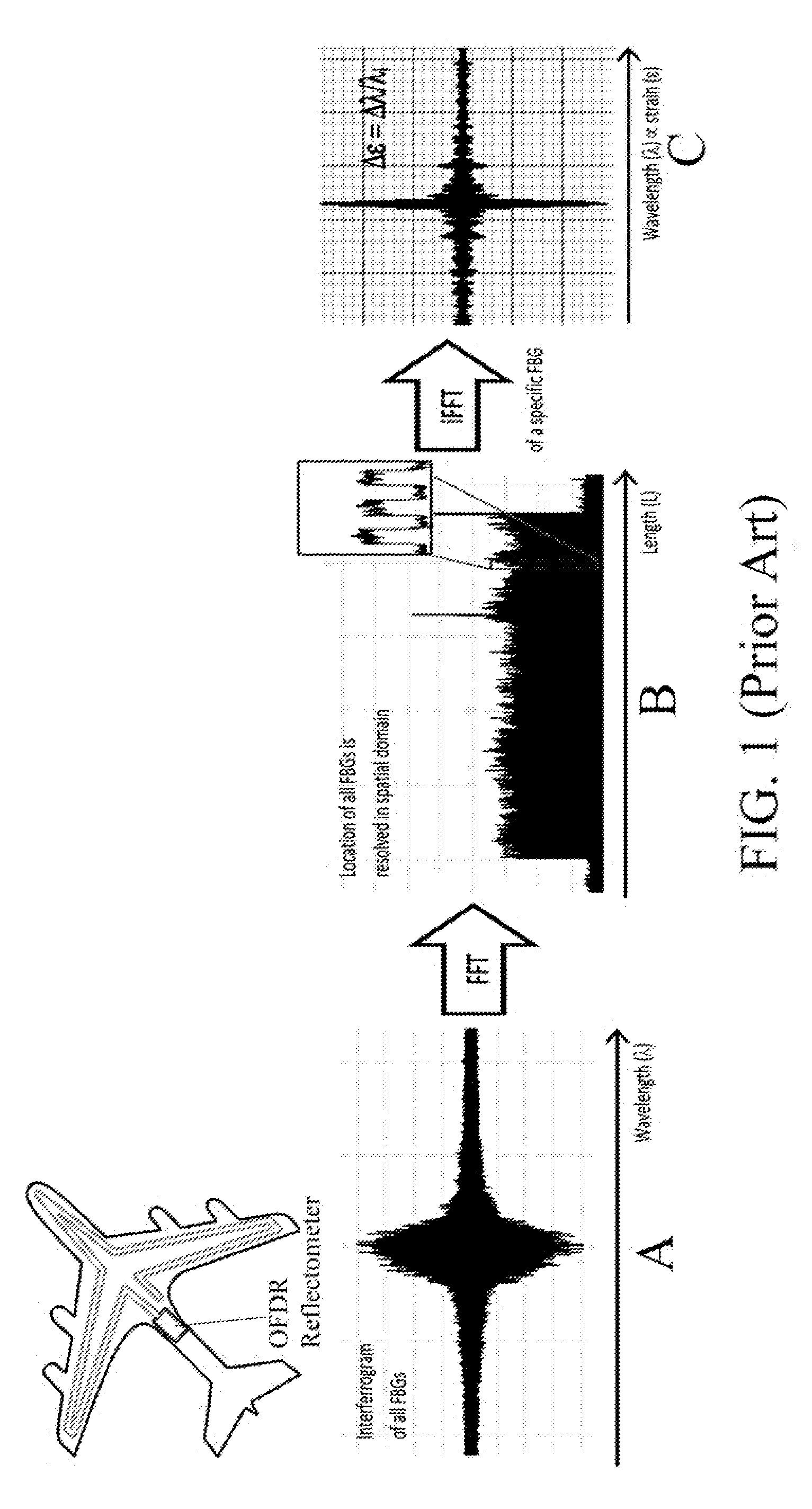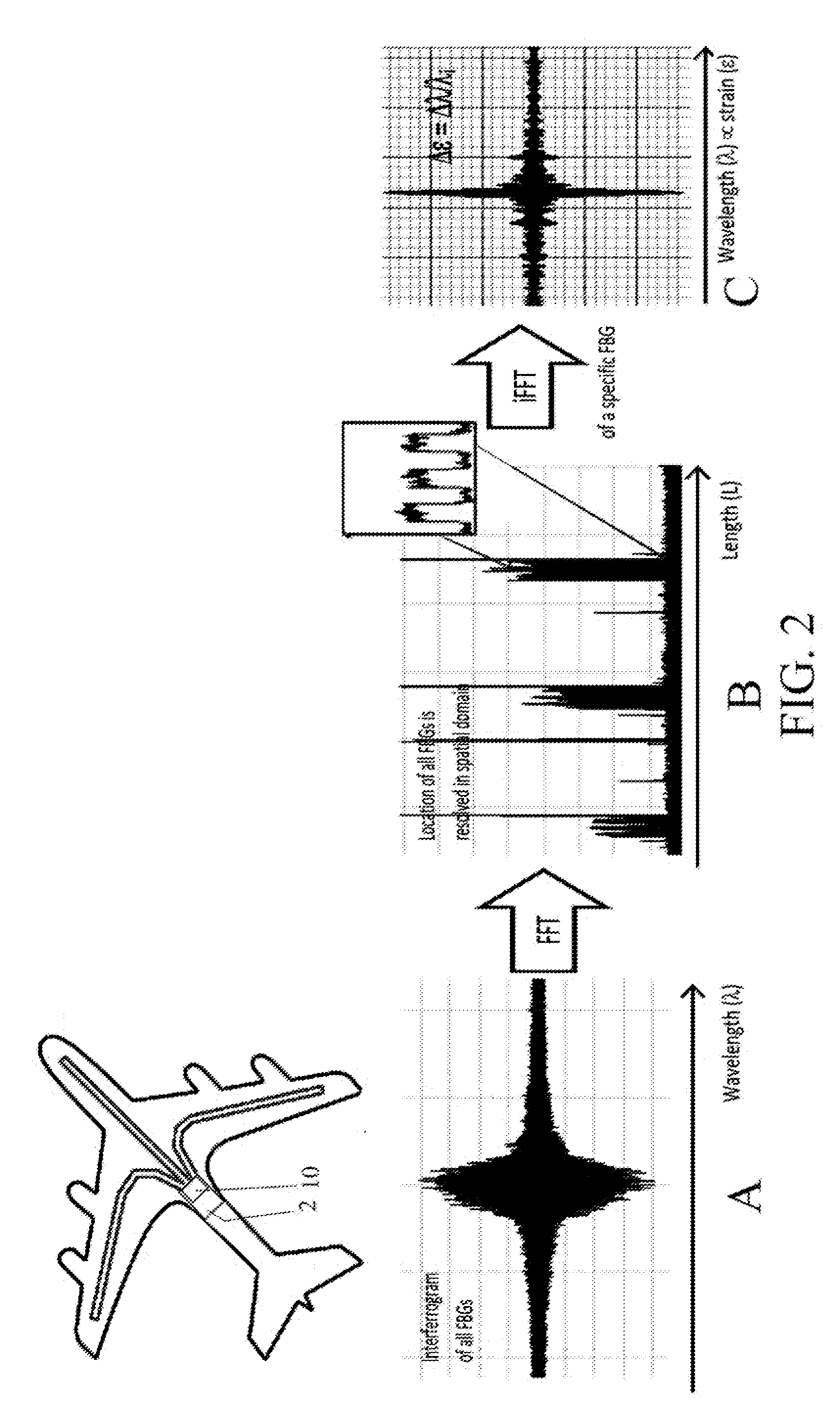Method and apparatus of multiplexing and acquiring data from multiple optical fibers using a single data channel of an optical frequency-domain reflectometry (OFDR) system
a technology of optical frequency domain reflectometry and optical fiber, applied in the field of optical fiber sensing systems, can solve the problems of complex wiring layout, unsuitable for certain applications, expensive and impractical use of direct line-of-sight monitoring, etc., and achieve the effect of simplifying optical, electronic and computational complexity
- Summary
- Abstract
- Description
- Claims
- Application Information
AI Technical Summary
Benefits of technology
Problems solved by technology
Method used
Image
Examples
Embodiment Construction
[0028]The present invention is a multi-channel fiber optic sensor system (FOSS) and method for multiplexing a network of parallel fiber Bragg grating (FBG) sensor-fibers to a single acquisition channel of a closed Michelson interferometer system.
[0029]FIG. 2 is a perspective diagram illustrating a multi-channel FOSS 2 according to the present invention, as well as a new method (A-C) of processing the multiplexed OFDR data from the multiple sensor arms. The FOSS 2 employs a reflectometer with one or more sensing channels (one being shown), each channel being optically multiplexed to multiple parallel sensing fibers (each a “sensing arm”, three of which are shown) to interrogate all locations of interest. The three sensing arms are multiplexed to one sensing channel by a multiplexer 10 which is part of the FOSS 2. As seen at (A) sensor acquisition occurs when all sensing arms are interrogated under OFDR resulting in an interferogram of all FBGs as pictured and described above. As seen...
PUM
 Login to View More
Login to View More Abstract
Description
Claims
Application Information
 Login to View More
Login to View More - R&D
- Intellectual Property
- Life Sciences
- Materials
- Tech Scout
- Unparalleled Data Quality
- Higher Quality Content
- 60% Fewer Hallucinations
Browse by: Latest US Patents, China's latest patents, Technical Efficacy Thesaurus, Application Domain, Technology Topic, Popular Technical Reports.
© 2025 PatSnap. All rights reserved.Legal|Privacy policy|Modern Slavery Act Transparency Statement|Sitemap|About US| Contact US: help@patsnap.com



